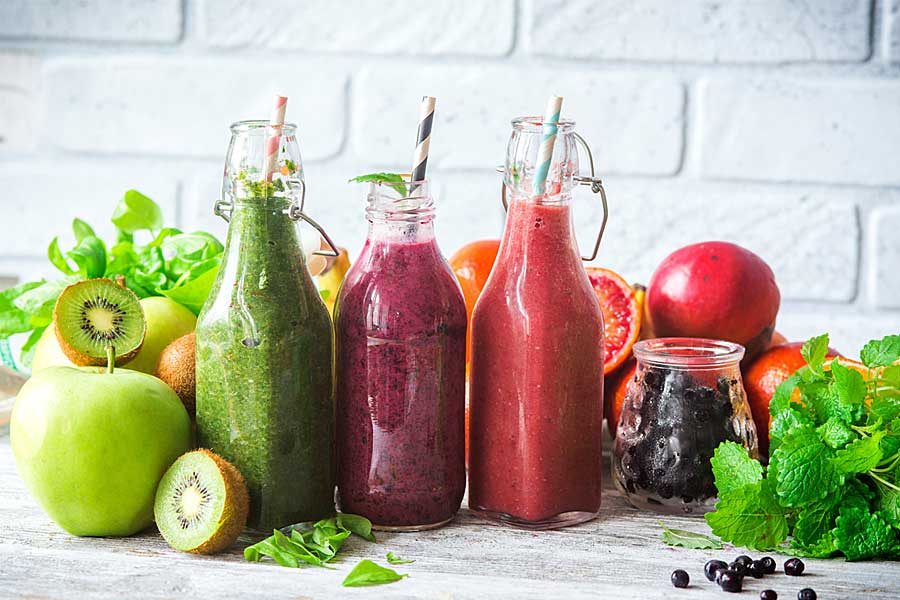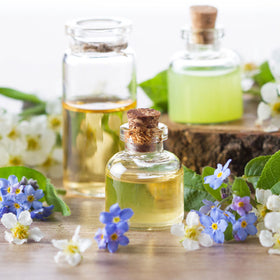Trusted for 25+ Years
Juicing & Blending For Sexual Health

Dr. Lisa Lawless, CEO of Holistic Wisdom
Clinical Psychotherapist: Relationship & Sexual Health Expert

Benefits of Juicing
Juicing can be a healthy way of getting nutrients, although blending (whole food juicing) is better for you. Taking in beneficial nutrients is not just good for your health but for your sexual functioning as well. Sexual functioning is highly connected to the health of your blood circulation, hormonal balance, and other factors, so taking care of your overall health will directly convey to your health sexually.
Juicing is an easy way to add more vegetables to your diet in a more concentrated form than if they were cooked. And while vegetables, when cooked, lose some of their vitamins and minerals, juicing allows you to ingest most of the nutrients.
There are a few simple rules for juicing. To avoid consuming too much sugar, you should drink more vegetables than fruit. Juicing fruit with high fructose levels is not good for you as they spike blood sugar levels, increasing the risk of hyperglycemia (high blood sugar levels). The best fruits for juicing are low glycemic fruits such as berries as they do not spike blood sugar levels the same way that fruits such as apples or pineapples do. Juicing vegetables to create a base for soups can be the ideal means of using a juicer.
Removing Fiber Removes Nutrients
It's essential to eat plenty of necessary fiber found in legumes, whole grains, and whole fruits and vegetables. Many people assume that juicing releases all the nutrients from the fiber of the juice, allowing you to drink vitamins and minerals that the body would not otherwise absorb and leaving the worthless fiber behind. However, fiber serves an important purpose.
The increase in blood sugar is the more apparent issue when blending fruit. After all, you are much more likely to drink the fructose of three apples than just eating one when you juice. That high amount of fructose spikes your blood sugar and can impact the body, just like eating a candy bar.
The Nutrients In Fiber
Fiber is not just a bulking agent for helping with passing stool, nor is it an inert digestible substance. Rather, it is digestible by our gut bacteria, making short-chain fatty acids that can inhibit the growth of harmful bacteria and increases mineral absorption. This includes calcium absorption, which can improve bone mineral density. Fiber also helps maintain normal bowel structure, keeping us regular, and helps stimulate colonic blood flow and fluid and electrolyte uptake.
Health Benefits Of Fiber
When we juice, we lose more than just the fiber; we lose all the nutrients that are bound to the fiber. Studies have shown that increased consumption of dietary fiber, in general, can reduce the incidence of obesity, diabetes, coronary heart disease, and cancer. In addition, studies have shown that high fiber diets help with healthy estrogen levels. A study from the International Journal of Cancer in 2007 found that increasing dietary fiber lowered excess estrogen levels, thus reducing the risk of hormone-related cancers.
Furthermore, when removing the fiber, you remove non-extractable polymeric proanthocyanidins (NEPP), which are a significant part of dietary polyphenols. Polyphenols may help to prevent lower heart disease risk blood clots, promote brain function, improve digestion, reduce blood sugar levels, and offer some protection against cancer. Therefore, removing fiber is not ideal when removing such vital nutrients through juicing. This is why blending is better because you are not removing the critical fiber.
Bioaccessibility
Chewing and cutting food break down cell walls of plants whereas blending and juicing opens the cells a bit more. Some health blogs suggest that juicing or blending breaks down the cell walls of fruits and vegetables and helps your body digest and absorb nutrients better (bioaccessibility). However, this has not been scientifically proven. What we know is that they do make foods quicker to digest.
Water Fasts Not Juice Fasts
Fasting should not be done with juice but with water. A helpful book called "Fasting and Eating for Health: A Medical Doctor's Program for Conquering Disease," by Joel Fuhrman, M.D., outlines great results through fasting and nutritional changes. Why water fasting? Simply put, it allows your body to detoxify and heal on a level that it cannot when you are eating food or drinking juice because when you eat, your body is constantly applying that cellular energy to digesting and processing food rather than being able to completely heal your body, especially with health issues like autoimmune diseases, leaky gut, migraines, heart disease and more. When the body is allowed to put cellular efforts elsewhere, it can heal itself.
Dr. Fuhrman recommends only water during a fast as anything else (such as juice, herbs, vitamins) will keep the body from completely fulfilling the process where the body can deplete glycogen reserves and allow the liver to produce large quantities of ketones, which simply put helps breakdown fatty tissue and remove atheromas and toxins in the body which may spark reactions like generalized vulvodynia and vulvar vestibulitis.
His fasting recommendations are 48 hours for women and 72 hours for men while drinking only water during the fast. It is not recommended to fast longer than this unless you are under the care of a physician so that they can determine how your body is handling the fast. However, we always recommend discussing this with your doctor first as some people should not fast unless supervised by their doctor, such as AIDS patients. Dr. Fuhrman's book does indicate that some of the more severe cases can fast for 3-5 weeks, drinking a minimum of a quart of water per day to see results, but again, this must be doctor supervised. The good news is that these healing results are permanent after a fast.
If you decide you want to fast, we recommend having a plan before you begin. This means discussing this with your doctor, having someone who can monitor you if you need help, making sure that you can rest during a fast, and restricting your activity. Finally, we recommend that you have a nutritionally dense diet plan that you follow up with after the fast. You mustn't return to eating large amounts right away, and avoid salt, spicy foods, and other things that may upset your stomach after a fast. Having a few bites of watermelon or sipping on a green smoothie may be best to start with after a fast.
Juicing Advocates
Like Jay Kordich (The Juiceman), many juicing enthusiasts have amazing stories about how juicing saved their lives. The movie "Fat, Sick & Nearly Dead," with Joe Cross is another fantastic example of the health benefits. You'll find that juicing recipes often have specific purposes, such as to give you more energy, improve your memory, or generally improve your health. However, as mentioned, you can get more benefits from blending and eating your food.
Dr. Joel Fuhrman's various books, such as the "Eat to Live Cookbook," are excellent and incorporate some juicing through soup bases. The general approach to healthy eating is to eat nutrient-dense foods to provide your body with the fuel to survive and thrive. He primarily recommends eating greens, beans, onions, mushrooms, berries, and seeds, or as he likes to use the acronym: GBOMBS.
Michael Greger, M.D., whose book "How Not To Die" is also exceptional and quite informative. He also has a great website called NutritionFacts.org for insightful nutritional information.
Green Smoothie Ingredient Ideas
What you put in a smoothie can make a huge difference. Avoiding fruits other than berries is ideal for keeping blood sugar at ideal levels. Mixing a healthy fat such as walnuts or omegas with a green smoothie is ideal for maximum nutrient absorption. Here are some ideas for what to put into your green smoothie:
- White or matcha tea for antioxidants.
- Pea protein for a plant-based protein that is not inflammatory like dairy-based protein sources such as whey.
- Dark leafy greens such as kale and chard with limited spinach to avoid having too many oxalates which can strain the kidneys in large quantities.
- Fresh or frozen turmeric, which has an active compound called curcumin, which is a potent anti-inflammatory and antioxidant.
- Fresh or frozen ginger as it provides antioxidants.
- Organic mixed berries, high in antioxidants and does not spike glucose levels.
- Maqui (Chilean wineberry) powder: are purple-black berries that are very high in antioxidants.
- Flaxseed, walnuts, or hemp Seed for Omega 3s and increasing the bioavailability of the nutrients in the smoothie.
- Stevia, a natural sweetener.
- Cocoa powder for anti-inflammatory antioxidants flavanols.
In Closing
Juicing can be healthy, but blending is better for you. Having a green smoothie and using berries for fruit is ideal. For more information on a nutritious diet, please see our helpful guide: Nutrition Guide for Good Sex & Health.


